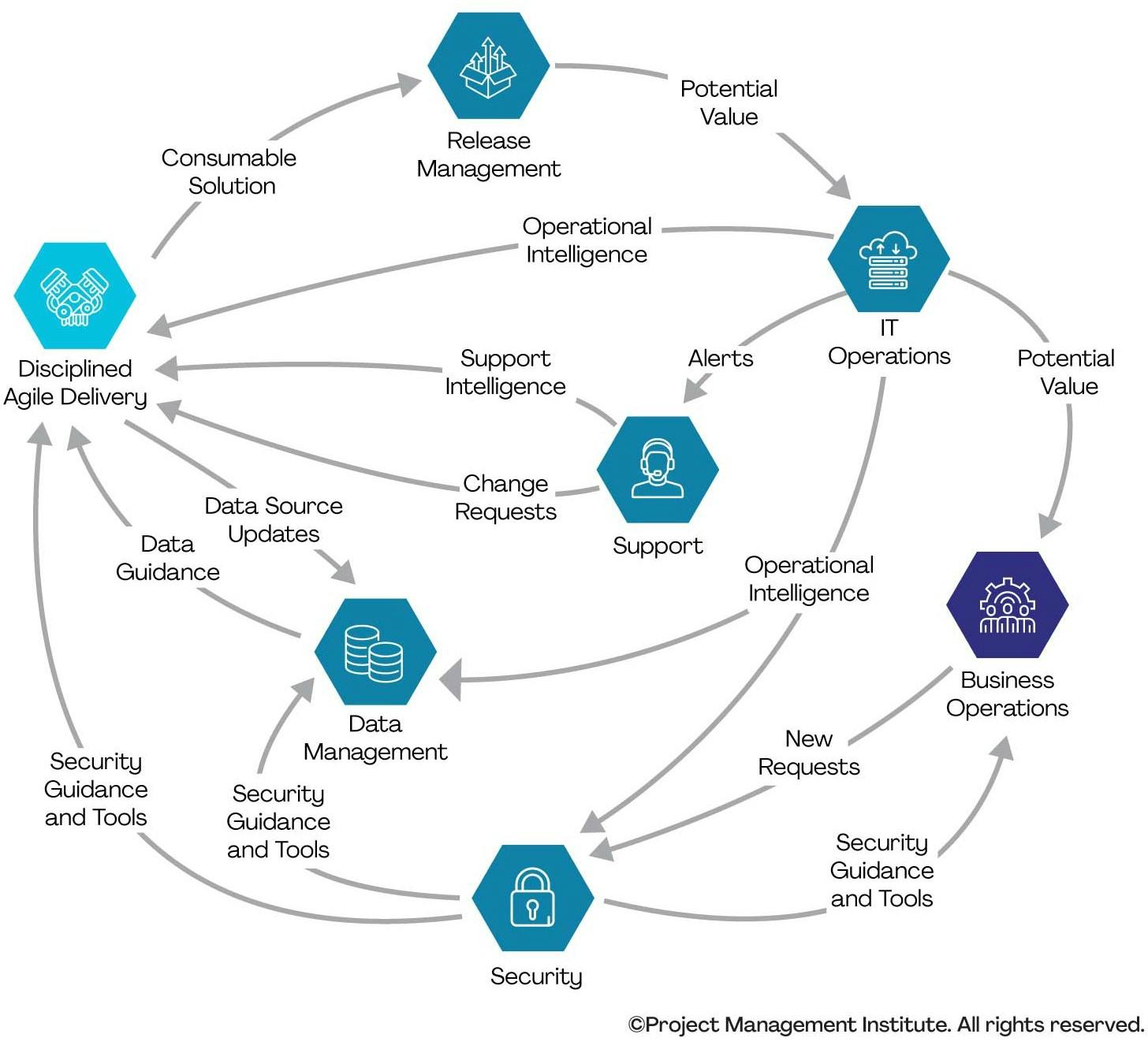All software engineering groups, across all industries, regardless of size, use release management to make their process smoother.
Why, you ask?
Let’s find out.
In this article, we cover what release management is, the different types of release management, some best practices, and then answer some frequently asked questions. We’ll also go over the Bunnyshell solution at the end and explain how it will help you and your team.
What Is Release Management?
Release management oversees the stages involved in planning, scheduling, and managing software releases or builds from development and testing to deployment across various environments. Although the term is relatively new, release management has grown rapidly due to innovations in technology.
As software development processes and software systems are more widely used, they require more specialization and greater complexity. Additionally, the growing number of web applications run on platforms that are growing in complexity and are constantly evolving. Enter: release management. The process allows teams to focus on the ongoing development, testing, and releases of these apps.
Drawing on project management, software development lifecycle (SDLC), and the IT infrastructure library (ITIL), release management increases an organization’s number of successful releases and reduces the number of quality issues. Releases can come in different forms, whether that is a physical product, a push to a device, a download from a server or website, or an update to a web app.
Different Types of Release Management
ITIL Release Management
ITIL is a specific type of process for IT operations. For release management, you schedule and maintain the integrity of new deployments, from planning to release. The IT operations team receives code from the software developers and decides how or when to deliver the service. This is done while maintaining uptime for existing services. With ITIL, every team operates differently, so the release management approach is customizable.
DevOps Release Management
DevOps has a prominent role in many of the duties once under release management roles but doesn’t diminish the importance of release management. In fact, release management acts as a method for filling the data gap in DevOps, being a constant process that works alongside development. Since DevOps streamlines the flow between delivery and operations, release management keeps tabs on apps and their components.
Agile Release Management
In agile release management, also known as agile release planning, you don’t focus on major releases. Instead, you break staged releases down into several iterations or sprints. You can have several sprints running simultaneously, depending on their complexity or your team structure. A sprint ends with a new product increment, but that doesn’t necessarily mean a product release happens. You’ll only release the big ones.

pmi.org
Best Practices for Release Management
DevOps release management is the future of IT operations and software development. Below, we focus on some DevOps release management best practices:
Define Criteria for Success
You can’t be subjective when it comes to the criteria for a successful release, otherwise, you’ll inhibit the growth needed to figure out what works best for you and your team. Clear acceptance criteria (AC) for testing will lead to more reliable releases. Therefore, QA managers, product owners, and release managers must work together to agree to the acceptance criteria and the critical release metrics that work best for them before moving forward with a new project.
Stage Your Staging Environment
We already know that a staging environment is where you can run your tests, monitor, and make any changes before going to production. As long as QA managers and product owners run the necessary tests and comb through the environment to keep it as close to production as possible, you’ll be able to find bugs or issues in staging before deploying the code further. A well-designed staging environment reduces client inconveniences and helps DevOps teams meet acceptance criteria faster with releases.
Use Environment as a Service
The number one rule in DevOps is automate, automate, automate. Automation reduces human error, streamlines your process, and improves the efficiency of your people and technology. And what better way to use automation to your advantage than with Environment as a Service (EaaS).
The best way to manage releases is to have your team spend more time on strategic thinking rather than on mundane, repetitive tasks. With this cloud-based solution, driven entirely by automation and self-service, your team can collaborate to only use what you need and scale what you don’t. In turn, you’ll be able to deliver reliable services for your customers.
Release Management FAQ
1. Why is release management important?
Release management is important for many reasons, one of the main reasons being continuous business improvement. Since many teams are working in parallel, without a release management plan in place, the chances that their release efforts will conflict with one another increase. The release management team can guide your IT team to ensure that their solutions are production-ready with effective release strategies. As soon as a release is finished and successful, ask yourself how it can be improved for future releases.
2. What is the role of release management in DevOps?
Release management is essential in DevOps environments. New ways of building and releasing software translates into new releases deployed multiple times a day. But software delivery still requires the collaboration and engagement of multiple participants, otherwise, there’s a risk of deploying low-quality software.
Collaboration is key for DevOps, so release management must be an enabler of DevOps. A successful DevOps approach means you streamline the flow between delivery and operations, coordinating and supporting the release efforts of the delivery team along the way.
3. Why is release management required?
The greater the complexity of your operational infrastructure is, the greater the risk that something doesn’t work as planned. Instead of risking a functionality breaking something when going to production, release management planning can come in for the rescue.
Each feature or app should go through a release planning phase before development begins. Identifying potential issues before they can cause delays is crucial in finalizing the correct scope of the release.
4. What is the difference between change and release management?
Change management and release management are very similar, but not the same thing. While release management as a process is focused on providing a project with a schedule and plans for execution, change management focuses on authorizing changes to controlled environments.
The main objective of your change management process is to standardize the procedures you’ll follow and the methods you’ll use for timely and efficient handling of every single change. In turn, you’re minimizing any risk that change-related incidents may have on service quality.
5. Where does release management fit into the product backlog?
It isn’t easy to give a straightforward answer because a well-built product backlog looks like whatever it needs to for each team to build the best product in the allotted time frame. A release management plan is not a static plan. When new knowledge becomes available, the plan changes accordingly, and entries in the backlog should be re-estimated. Therefore, the release plan should also be updated at regular intervals, ideally after every sprint.
6. How do you use source control to manage releases?
Source control, also known as version control, paired with release management, is what you need to deliver high-quality software. Source control allows you to quickly recover from mistakes, collaborate with other developers, review past changes, backup the code, and automate code-related tasks.
To effectively test and release software, you must have a reliable and straightforward release process to get your code in your various environments.
7. What are the four phases of release and deployment management?
The four phases are as follows:
- Existing code for a software app or program is taken from somewhere
- The code is built into a test environment
- Facilitate testing the code
- Put the code into production.
Let’s Power through Release Management
An EaaS can automate everything to support faster innovation and remove any bottlenecks. You and your DevOps team will save time and money adopting an EaaS solution. Just take a look at the many benefits an EaaS can bring your organization.
Streamline your process with Bunnyshell, so you can oversee all the stages involved in planning, scheduling, and managing software releases across your environments. Cut downtime and deliver reliable services at high velocity, and release only the best, reliable solutions for your customers. Read about how to implement release management for an even more in-depth look into how release management works wonders for you.
Enable High Velocity Development
Breakaway from the inability to quickly deploy isolated environments of any specification.
